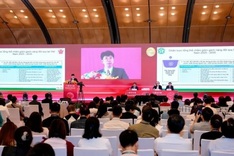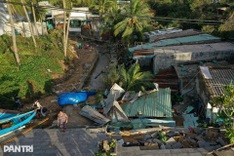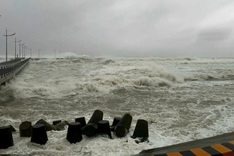 According to research firm BMI's new report "Vietnam Freight Transport Report Q2 2010," Vietnam's transport and communications GDP is forecasted to continue to rise faster than overall GDP.
According to research firm BMI's new report "Vietnam Freight Transport Report Q2 2010," Vietnam's transport and communications GDP is forecasted to continue to rise faster than overall GDP.
Vietnam's Prime Minister Nguyen Tan Dung approved the Vietnam Seaport Development Master Plan, which will require a total investment of VND360-440trn (US$19.5-23.8bn) by 2020. The plan aims to increase the transportation capacity of the country by 500-600mn tonnes of goods by 2015, 900-1,000mn tonnes by 2020 and 2,100mn tonnes by 2030. The primary focus of the plan from now to 2015 will be the international transit port Van Phong in Khanh Hoa Province, development of the Lach Huyen seaport complex in Hai Phong, and a seaport at the Nghi Son oil refinery. Although Vietnam has 266 ports, the majority of maritime infrastructure is outdated and has barely any support infrastructure to transport goods from the port to the rest of the country. The increased traffic levels in Vietnam's urban areas and the country's general fast-paced economic development have increased the volume of exports and imports to and from the country, thus creating a pressing need for better infrastructure between ports and inland. The new master plan will improve the port infrastructure in the country.
Since BMI's last report, the firm has cut back its macroeconomic forecasts for Vietnam, acknowledging the danger of a double dip' growth slowdown. BMI now estimates GDP growth of 5.3% in 2009 (up from 5.1% earlier) but have reduced the projection for 2010 to 4.4% (was 5.9%) and have also trimmed 2011 to 5.5% (was 6.8%). Its forecast for 2010-2014 is for an annual average GDP growth rate of 5.9% per annum, representing a reduction on the 7.3% average rate achieved in the preceding five-year period. BMI maintains some adjustments to mode-specific freight carried forecasts. In road haulage, BMI has trimmed its forecast to take account of the global downturn and lower freight demand. The firm still sees road-freight turnover running ahead of the general rate of economic expansion in Vietnam. Air freight is beginning to emerge from a difficult period. WTO membership has been supportive of greater freight transport turnover relative to GDP across all modes, but particularly so for shipping. On the downside, the 2009 contraction in trade had a particularly strong impact on shipping and Vietnam is expected to export less coal by sea as its domestic power needs rise. "The net result of this is that we expect freight carried growth across all modes, measured in mntkm, to average 7.4% a year in 2010-2014," the report said.
According to BMI's latest estimates, transport and communications GDP rose by 6.5% in 2009, 1.2 percentage points (pps) faster than overall GDP, which the firm estimates to have increased 5.3%. For the 2010- 2014 forecast period, BMI expects the transport and communications sector to continue outpacing the economy as a whole in value terms. It will achieve average annual growth of 6.9%, versus 5.9% for overall GDP. The value of transport and communications GDP will rise to US$7.0bn in nominal terms by 2014, of 4.5% of Vietnam's GDP. "By modes, we project that air freight to be the fastest growing, rising by 7.7% per annum, followed by road haulage at 7.6%, shipping (7.4%), pipelines (6.8%) and rail (6.5%)," the report said.
Transport, communications forecasted to continue outpacing economy
Vietnam's transport and communications GDP is forecasted to continue to rise faster than overall GDP, according to a new report.
Source: dtinews.vn




















